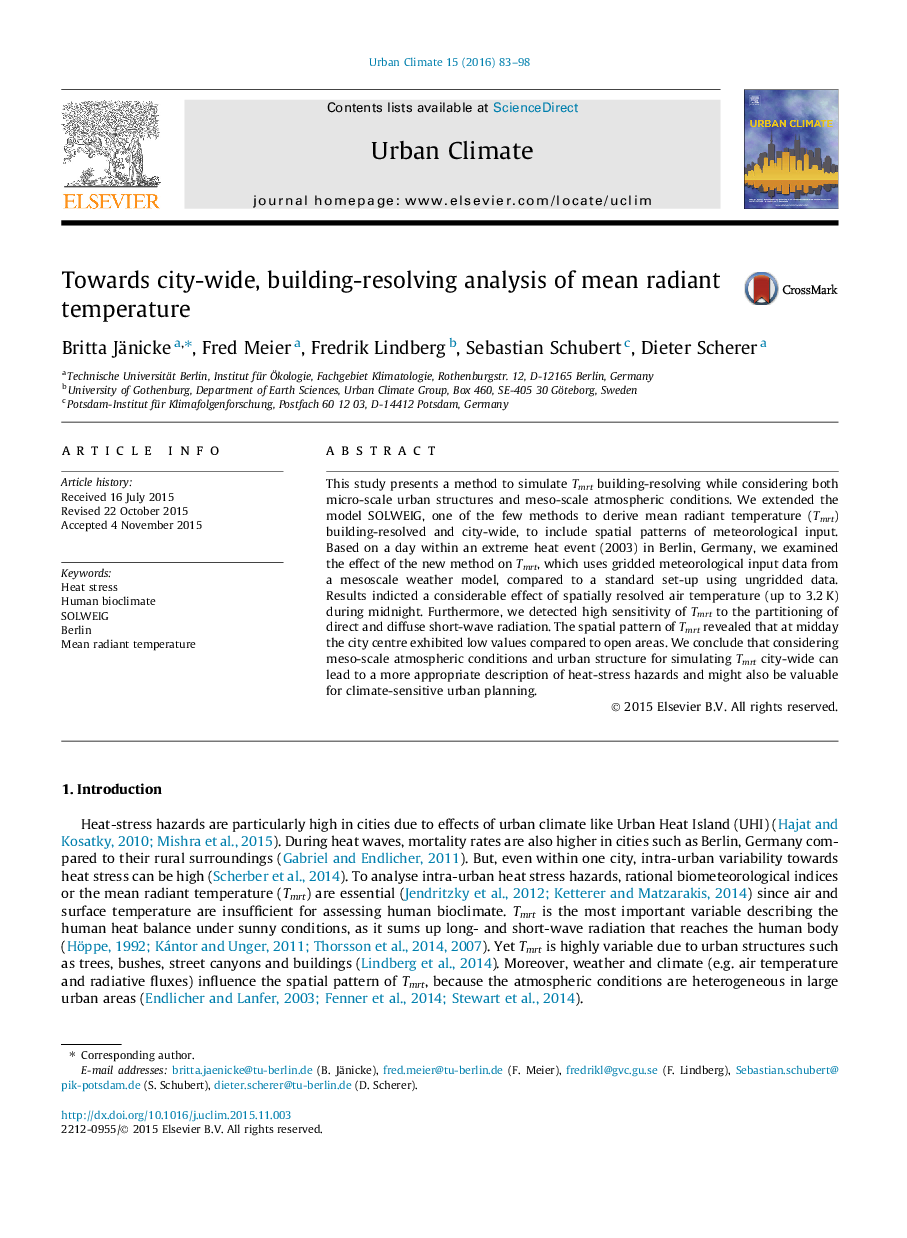| کد مقاله | کد نشریه | سال انتشار | مقاله انگلیسی | نسخه تمام متن |
|---|---|---|---|---|
| 143697 | 163461 | 2016 | 16 صفحه PDF | دانلود رایگان |
• Tmrt was simulated city-wide and building-resolving.
• SOLWEIG was coupled with meteorological data from a regional climate model.
• Considering urban-climate modifications and weather conditions is important.
• Sensitivity of Tmrt was high to the partitioning of direct and diffuse radiation.
• Tmrt was at the day highest in suburban areas of Berlin and in open areas.
This study presents a method to simulate Tmrt building-resolving while considering both micro-scale urban structures and meso-scale atmospheric conditions. We extended the model SOLWEIG, one of the few methods to derive mean radiant temperature (Tmrt) building-resolved and city-wide, to include spatial patterns of meteorological input. Based on a day within an extreme heat event (2003) in Berlin, Germany, we examined the effect of the new method on Tmrt, which uses gridded meteorological input data from a mesoscale weather model, compared to a standard set-up using ungridded data. Results indicted a considerable effect of spatially resolved air temperature (up to 3.2 K) during midnight. Furthermore, we detected high sensitivity of Tmrt to the partitioning of direct and diffuse short-wave radiation. The spatial pattern of Tmrt revealed that at midday the city centre exhibited low values compared to open areas. We conclude that considering meso-scale atmospheric conditions and urban structure for simulating Tmrt city-wide can lead to a more appropriate description of heat-stress hazards and might also be valuable for climate-sensitive urban planning.
Journal: Urban Climate - Volume 15, March 2016, Pages 83–98
